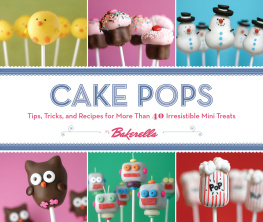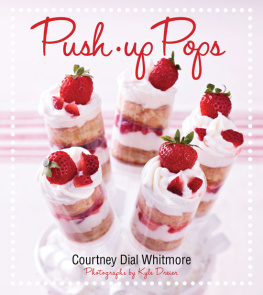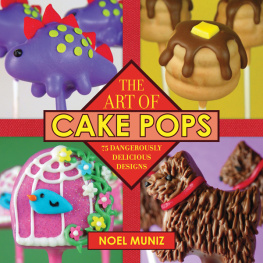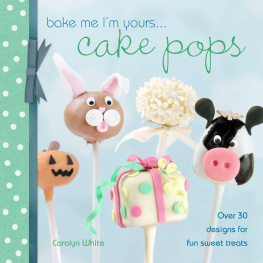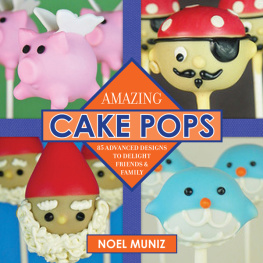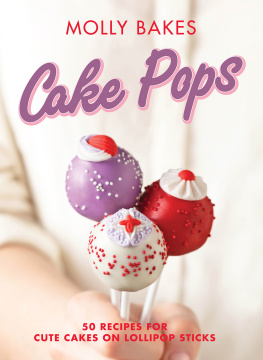Cake pops are crumbled cake mixed with frosting and rolled into bite-size balls, which are dipped in candy coating and served lollipop-style on a stick. They are the basis of all the projects in this book and a canvas for your creativity. Once you know how to make them, you will have the skills to create amazing tiny treats that will impress you and anyone you give them to.
You can make cake pops with just about any cake and frosting you like, but I usually tell people to learn how to make them using purchased mixes and frostings to start. Cakes made from box mixes provide consistent results and crumble beautifully, and they go together quickly and easily, allowing you to focus on the design and technique as you learn.
Read through the following pages for easy instructions and helpful information to get you started making your very own cake pops.

Once you know how to make a basic cake pop, its easy to start making the projects in this book or create your own designs.

YOULL NEED
18.25-oz (520-g) box cake mix
9-by-13-in (23-by-33-cm) cake pan
Two baking sheets
Wax paper
Large mixing bowl
16-oz (455-g) container ready-made frosting
Large metal spoon
Plastic wrap
48 oz (1.4 kg) candy coating
Deep, microwave-safe plastic bowl
48 lollipop sticks
Styrofoam block
MAKES 48 CAKE POPS
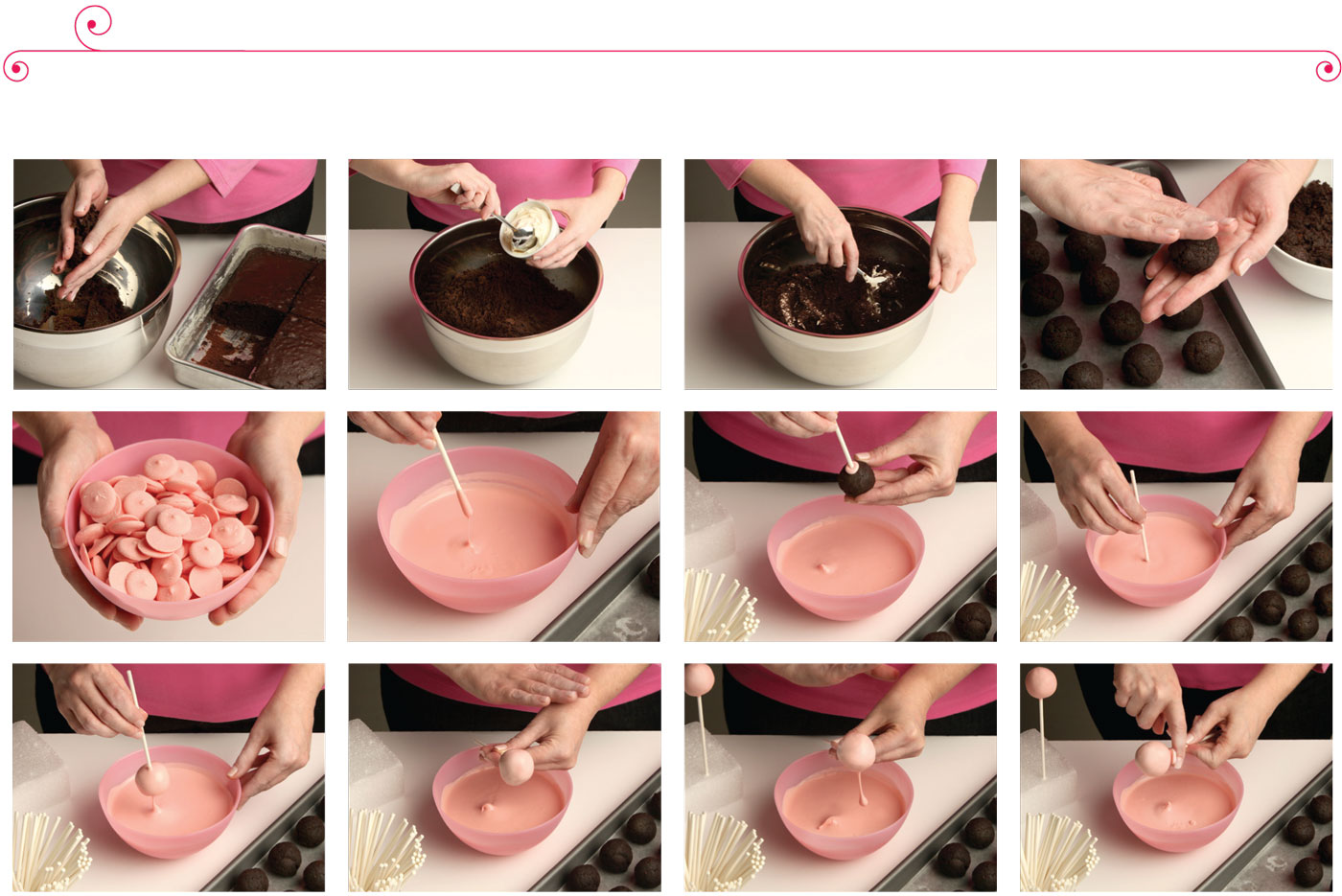
Bake the cake as directed on the box, using the 9-by-13-in (23-by-33-cm) cake pan. Let cool completely.
Once the cake has cooled, get organized and set aside plenty of time (a couple of hours) to crumble, roll, and dip 4 dozen cake pops. Line the baking sheets with wax paper.
Crumble the cooled cake into the large bowl. You should not see any big pieces of cake.
Add up to three-quarters of the container of frosting to the bowl. (You will not need the remaining frosting. Save it in the refrigerator for a later use.) Mix it into the crumbled cake, using the back of a large metal spoon, until thoroughly combined. If you use the entire container, the cake balls will be too moist.
The mixture should be moist enough to roll into 1-in (4-cm) balls and still hold a round shape. After rolling the cake balls by hand, place them on the prepared baking sheets and let them rest for about 20 minutes before chilling.
Cover with plastic wrap and chill for several hours in the refrigerator, or place them in the freezer for about 15 minutes. You want the balls to be firm but not frozen.
Place the candy coating in the deep microwave-safe bowl. These bowls make it easier to cover the cake balls completely with candy coating while holding the bowl and without burning your fingers. The coating should be about 3 in (7.5 cm) deep for easier dipping. I usually work with about 16 oz (455 g) of coating at a time.
Melt the candy coating, following the instructions on the package. Microwave on medium power for 30 seconds at a time, stirring with a spoon between each interval. You can also use a double boiler. Either way, make sure you do not overheat the coating. See for more candy coating basics.
Now youre ready to dip. Take a few cake balls out of the refrigerator or freezer to work with, keeping the rest chilled. If theyre in the freezer, transfer the rest of the balls to the refrigerator at this point so they stay firm but do not freeze.
One at a time, dip about -in (12 mm) of the tip of a lollipop stick into the melted candy coating, and then insert the lollipop stick straight into a cake ball, pushing it no more than halfway through.
Holding the lollipop stick with cake ball attached, dip the entire cake ball into the melted candy coating until it is completely covered, and remove it in one motion. Make sure the coating meets at the base of the lollipop stick. This helps secure the cake ball to the stick when the coating sets. The object is to completely cover the cake ball and remove it without submerging it in the coating more than once. A small, deep plastic bowl is very helpful during this step. If you do resubmerge the cake pop, the weight of the candy coating can pull on the cake ball and cause it to get stuck in the coating.



